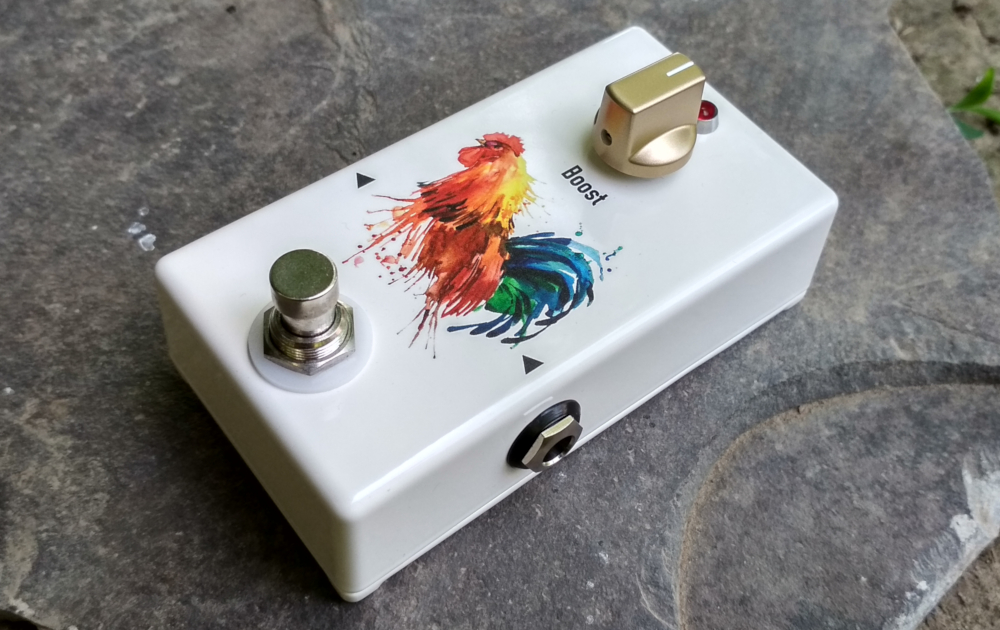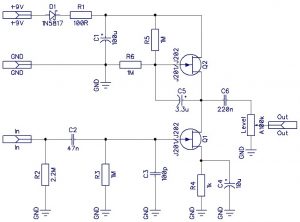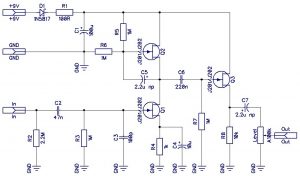
Rooster Booster
Recently I’ve tried a bunch of booster desings and found that many of these simple circuits are worth to be presented to the musicians. So here it comes again, a booster post. This time the subject is Jack Orman’s AMZ Mini-Booster. There is not much to say about it (like with any boosters…): more or less transparent, but certainly not a clean booster. Even on its own it starts to distort the signal, however it does this in a very pleasant way. Threfore I would not necessarily recommend it for using in the amp’s loop to make any solos louder, but more in front of your amp or your overdrive pedals to increase their gain. Jack Orman’s description of the effect is true: indeed it has very tube-like quality due to its warm sound and very dynamic response. If you are looking for a booster it is certainly worth the one or two hours of building time.
 The basis of the circuit is the old tube design called MU-Amp. R.G. Keen can explain it way better than I do, but in short it is like a push-pull amp, similar to a tube amp’s power amp section. Given that tube amp has a push-pull design :) The effect works superb the way it is, but adding a buffer stage at the end makes it even more independent from what is added after it and increasing the available gain a bit. Jack Orman has done this by the way, in his pre-assmbled PCBs he has already included this output buffer section. On the second schamtic drawing you can see the version with the output buffer. I have also included this version in the build docu, that you can find under the Projects menu too.
The basis of the circuit is the old tube design called MU-Amp. R.G. Keen can explain it way better than I do, but in short it is like a push-pull amp, similar to a tube amp’s power amp section. Given that tube amp has a push-pull design :) The effect works superb the way it is, but adding a buffer stage at the end makes it even more independent from what is added after it and increasing the available gain a bit. Jack Orman has done this by the way, in his pre-assmbled PCBs he has already included this output buffer section. On the second schamtic drawing you can see the version with the output buffer. I have also included this version in the build docu, that you can find under the Projects menu too.



Vivek MEHTA
2021.05.14. at 09:00Technical Analysis of the mu-Amp in the BSIAB2 :
https://www.diystompboxes.com/smfforum/index.php?topic=127101.0